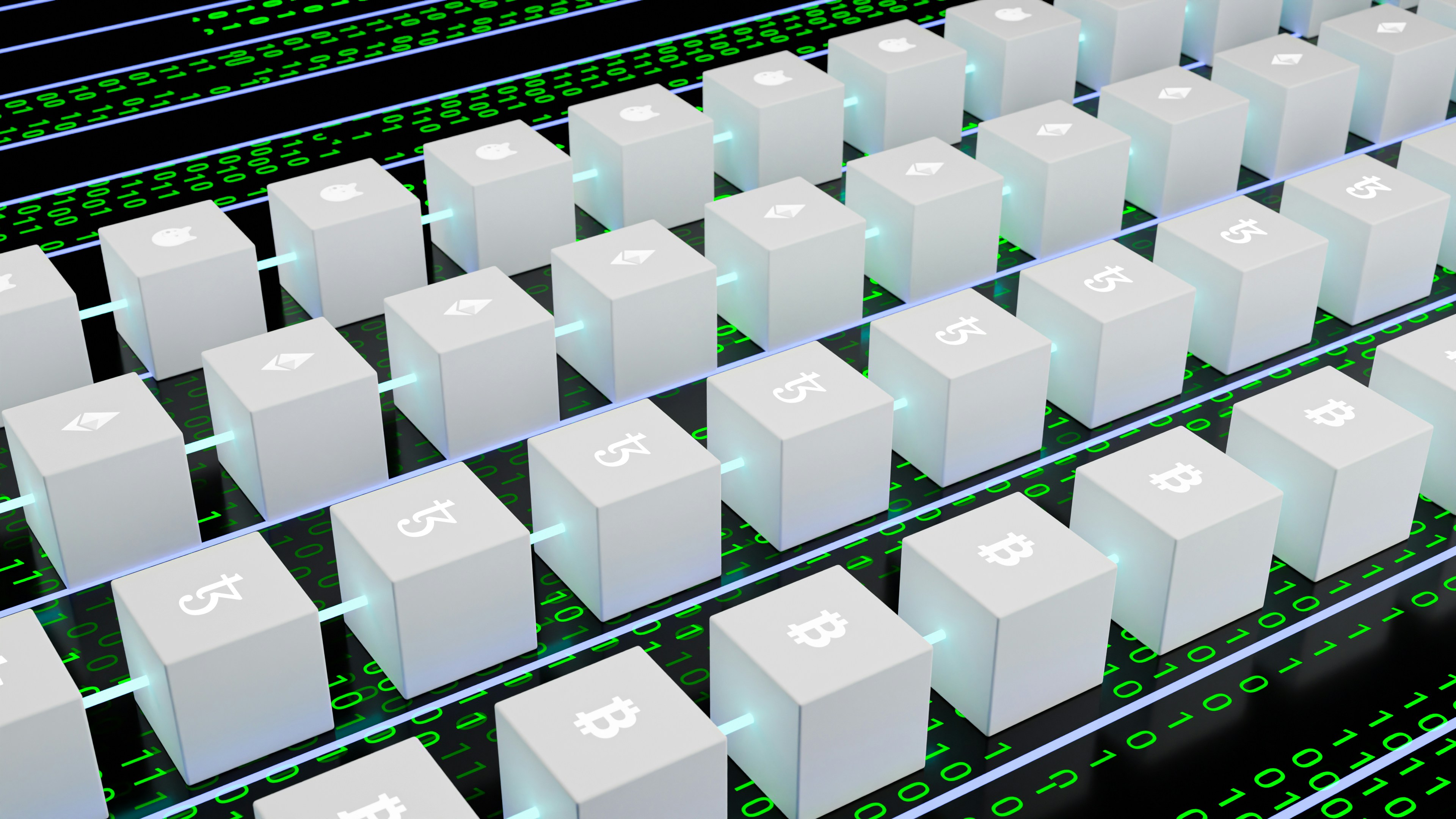Introduction to Digital Collectibles
Digital collectibles represent a fascinating intersection of technology, culture, and commerce, emerging prominently in the context of the Web3 era. These items, often built upon blockchain technology, are unique digital assets that users can buy, sell, trade, or own. Unlike traditional collectibles, which typically consist of physical objects like stamps, coins, or trading cards, digital collectibles exist solely in the digital realm. This shift was made possible by the advancements in technology that have facilitated the creation, storage, and management of digital assets.
The move from physical to digital collectibles has been driven by both technological evolution and changing consumer behavior. As more individuals embrace digital experiences, there is a growing acceptance and desire for assets that are stored and traded online. This transformation can be attributed to increased internet access, enhanced blockchain infrastructures, and the mainstream acceptance of cryptocurrencies. The rise of non-fungible tokens (NFTs) has further accelerated this trend, offering a means to verify ownership and authenticity of digital collectibles, thereby adding intrinsic value to what was previously viewed as ephemeral or easily replicable digital content.
Moreover, the growing interest in gaming, art, and virtual environments has paved the way for digital collectibles to thrive. Users can showcase unique digital artworks or in-game items, fully capitalizing on the idea of ownership in virtual spaces. As the lines between digital and physical realms continue to blur, the appeal of digital collectibles is likely to expand, attracting diverse audiences ranging from serious investors to casual enthusiasts. Thus, understanding digital collectibles is crucial for grasping contemporary trends in digital assets and the rapidly evolving landscape of online trading.
The Web3 Revolution
The advent of Web3 marks a transformative shift in the digital landscape, significantly impacting the realm of digital collectibles. This new era is grounded in decentralization, empowering users by placing them at the center of their digital experiences. Unlike its predecessors, Web3 utilizes blockchain technology, which provides a secure, transparent framework for buying, selling, and trading digital assets. Each collectible, whether an artwork, music, or virtual real estate, gains a unique identity through tokenization, ensuring its authenticity and ownership.
One of the defining features of Web3 is the application of smart contracts, which automate transactions and enforce the terms of agreements without the need for intermediaries. This technological advancement not only streamlines the process for collectors and investors but also fosters a trust-based environment, as all transactions are recorded on a public ledger. Consequently, these innovations facilitate greater liquidity in the digital collectibles market and reduce the risks associated with counterfeit or fraudulent assets.
The implications of Web3 extend to the potential benefits it offers, such as improved provenance tracking and the ability for collectors to maintain a verifiable history of their digital assets. This not only adds value to the collectibles but also enhances the overall collector experience by fostering confidence around ownership. Additionally, Web3 democratizes access to marketplaces, enabling creators and investors from diverse backgrounds to engage in the digital collectible ecosystem. As platforms continue to evolve, there are boundless opportunities for growth and diversification in this area.
In conclusion, the Web3 revolution is poised to reshape the digital collectibles landscape, offering unprecedented opportunities for ownership, transparency, and user engagement. With advancements in decentralization and blockchain technology, collectors and investors can look forward to a more inclusive and secure future in the world of digital assets.
Types of Digital Collectibles
Digital collectibles have evolved significantly with the advancement of technology, particularly in the Web3 era, offering a diverse range of categories that attract various demographics. Each type presents unique features and appeals to distinct audiences, establishing a vibrant marketplace for enthusiasts and collectors alike.
One of the most prominent types of digital collectibles is Non-Fungible Tokens (NFTs). NFTs are unique digital assets that represent ownership of a distinct item or piece of content, often verified on blockchain technology. They can range from digital art to music and even tweets. The allure of NFTs lies in their ability to provide authenticity and scarcity, making them particularly appealing to artists and collectors seeking to monetize their creations or acquire unique pieces.
Another popular category includes virtual trading cards, which have seen a resurgence through platforms like NBA Top Shot. These collectibles feature highlights and significant moments in sports, allowing fans to own digital representations of their favorite athletes. The appeal of virtual trading cards is enhanced by the gamification aspect, often enabling users to trade, buy, and sell these items within interconnected ecosystems.
In-game assets represent an additional type of digital collectible. Players often invest in characters, skins, or weapons within their favorite video games. These items can hold significant value as they enhance the gaming experience and sometimes contribute to the player’s success in the game. The rise of play-to-earn models has further driven interest in acquiring and trading such assets, thus blurring the lines between gaming and investment.
Lastly, digital art pieces are emerging as a significant category in the realm of digital collectibles. Artists are using technology to create and share their work, utilizing platforms that cater specifically to digital art collectors. The intersection of technology and creativity makes this category particularly appealing, as collectors seek to diversify their portfolios with innovative and cutting-edge visuals.
The Role of NFTs in Digital Collectibles
Non-Fungible Tokens (NFTs) have emerged as a cornerstone in the world of digital collectibles, permuting the way we perceive ownership and value in the digital realm. An NFT is a unique digital asset that confirms the ownership of a specific item by utilizing blockchain technology. Unlike cryptocurrencies, which are interchangeable, each NFT has distinct information and attributes that make it irreplaceable. This characteristic of uniqueness is pivotal for digital collectibles, as it establishes authentic ownership and provenance.
One significant property of NFTs is their ability to create scarcity. In a digital environment where duplication is effortless, scarcity becomes a valuable commodity. For example, the rise of limited edition NFTs allows creators to retain control over the distribution of their work, ensuring that only a specific number are released. This technique not only drives demand but also plays a crucial role in enhancing the overall value of digital items. Scarcity can lead to higher resale prices, which has attracted many investors and collectors.
Provenance, or the history of ownership of a digital collectible, is another major benefit NFTs bring to the table. Through blockchain, the transaction history of an NFT can be traced back to its origin, providing verifiable proof of authenticity. This transparency eliminates doubts surrounding fake items and enhances trust among buyers and sellers. Case studies such as the Bored Ape Yacht Club and CryptoPunks exemplify how successful NFT projects have revolutionized the collectible market; both have created immense valuation and community engagement through their unique offerings. These examples underscore the tangible benefits of using NFTs in the realm of digital collectibles, showcasing their potential to redefine ownership and value in unprecedented ways.
Marketplaces for Digital Collectibles
The emergence of digital collectibles has birthed a variety of online marketplaces that cater to enthusiasts and investors alike. These platforms provide users with the ability to buy, sell, and trade their digital assets in a secure and efficient environment. Notable marketplaces such as OpenSea, Rarible, and Foundation have become prominent players in the digital collectibles space, offering diverse features and a user-friendly experience. OpenSea is perhaps the largest, hosting a vast array of digital artwork and collectibles across various categories. Its intuitive interface facilitates easy navigation, allowing users to discover new assets, follow creators, and participate in auctions.
Rarible distinguishes itself by incorporating a decentralized governance model, enabling users to vote on platform upgrades and proposals. This empowers the community and fosters a sense of ownership among users, as they become participants in the platform’s development. The ease of minting digital collectibles on Rarible also attracts many creators, further enriching the marketplace’s inventory. On the other hand, Foundation focuses on curated content, providing a more exclusive environment for artists and collectors to engage with high-quality works, thereby elevating the overall standard of digital collectibles found on the platform.
In addition to these established platforms, the rise of decentralized marketplaces, such as Mintable and Nifty Gateway, introduces new dimensions for collectors and sellers. These platforms leverage blockchain technology to ensure transparent and secure transactions, decentralizing the control typically held by traditional marketplaces. Decentralized marketplaces promote a fair trading environment, where users can interact with one another without intermediaries, leading to potentially lower fees and greater autonomy. As the digital collectibles market matures, the interplay between centralized and decentralized marketplaces will undoubtedly shape the future of online trading, offering various experiences tailored to the preferences of distinct collector demographics.
The Collector’s Perspective
The psychology behind digital collecting is a fascinating aspect that motivates individuals to engage in this emerging trend. Collectors often pursue digital collectibles for various reasons—nostalgia, investment, social status, or simply the thrill of the hunt. The emotional connection that individuals build with their digital items—be it NFTs, virtual real estate, or digital art—can significantly influence their collecting behavior. This attachment often compels enthusiasts to seek out rare or unique items, driving demand and market growth.
Different types of digital collectibles attract diverse collector profiles. For instance, art enthusiasts may gravitate towards digital art pieces or NFTs from renowned artists, while gamers may seek out in-game assets or skins that enhance their gaming experience. Additionally, collectibles associated with popular culture, such as virtual trading cards or memorabilia from beloved franchises, attract fans eager to express their allegiance. Each collector’s motivations can shape their collection’s direction, influencing which assets they prioritize and how they value them.
Explore Our Powerful Magic Spells
Choose a spell that suits your needs and experience real results today!
In the rapidly evolving landscape of digital collectibles, certain trends are reshaping collector behaviors. Social media platforms and online communities now play significant roles, connecting collectors and fostering discussions about value, rarity, and desirability. Furthermore, the integration of blockchain technology enhances provenance and authenticity, encouraging confidence in purchases. For those looking to start or expand their digital collections, understanding these trends is crucial. Beginners are advised to research collectible types and establish clear goals for their collections. Moreover, engaging with online communities can provide insights, support, and updates on new releases, helping collectors make informed decisions. By staying informed and connected, digital collectors can navigate the marketplace effectively and cultivate collections that reflect their personal preferences and aspirations.
The Risks and Challenges
The rise of digital collectibles within the Web3 ecosystem brings a new array of risks and challenges that investors and collectors must navigate. One of the most notable concerns is market volatility. Just as with traditional assets, the value of digital collectibles can fluctuate significantly, often driven by market sentiment, trends, and external factors. This unpredictability can lead to potential losses for investors who may not be adequately prepared for such abrupt changes in value. Buyers should conduct thorough research and stay informed about market conditions to mitigate the effects of volatility.
Another area of concern is security. Digital collectibles, often stored in digital wallets or on blockchain platforms, can be vulnerable to hacking and other cyber threats. Investors must take proactive measures to safeguard their assets, such as utilizing strong passwords, enabling two-factor authentication, and considering cold storage solutions. Understanding the security frameworks of the platforms involved is also crucial for ensuring that digital assets remain protected from unauthorized access.
Regulatory issues further complicate the landscape of digital collectibles. As the market evolves, governments and organizations are still working on defining clear regulations surrounding cryptocurrencies, NFTs, and other digital assets. Uncertain regulatory frameworks can lead to risks such as sudden changes in legal status, increased taxation, or restrictions on how these collectibles can be traded or sold. It is imperative for investors to stay informed about these developments and to consider how regulations could impact their investments.
In this context, adopting best practices for investing in digital collectibles includes diversifying one’s portfolio, only investing what one can afford to lose, and keeping abreast of both market and regulatory trends. By understanding these risks and challenges, individuals can navigate the exciting yet complex world of digital collectibles with greater confidence and security.
Future Trends in Digital Collectibles
The future of digital collectibles is poised for transformation as we continue to embrace the Web3 era. Emerging trends suggest a trajectory towards enhanced interactivity among collectors and their digital assets. These collectibles will evolve beyond static images or videos into dynamic entities, offering users immersive experiences that integrate with social platforms. By utilizing blockchain technology, these assets can be programmed to respond to collectors’ actions or preferences, providing a personalized engagement that significantly enriches the ownership experience.
Moreover, the integration of virtual and augmented reality technologies offers exciting prospects for digital collectibles. Imagine stepping into a virtual gallery where users can view their collection not only as digital images but also as interactive 3D objects. This type of environment would allow collectors to showcase their assets in innovative ways, fostering a deeper appreciation for artistry and rarity. The evolution of augmented reality applications could enable collectors to project their digital possessions into the real world, further bridging the gap between digital and physical realms.
Emerging technologies such as artificial intelligence and machine learning are expected to play pivotal roles in shaping the collectible market. These innovations could streamline the process of creating, curating, and trading digital collectibles, making participation more accessible for a wider range of audiences. Enhanced algorithms may assist in predicting trends and forecasting the potential market value of specific assets, empowering collectors to make informed decisions.
Community engagement and collaboration around digital collectibles will also flourish in this new landscape. As these assets often serve as mediums for expressing personal identity and community belonging, we can anticipate the rise of platforms that foster interactive relationships among collectors. This strengthened sense of community is likely to manifest through events, contests, and collaborative projects, enhancing the overall collector experience and promoting a vibrant culture around digital collectibles.
Conclusion
In the rapidly evolving landscape of the Web3 era, digital collectibles have emerged as a significant facet of the online trading world. This resurgence not only highlights the advancements in technology but also underscores the profound intersection of culture and economics within this digital framework. Throughout this discourse, we have explored how blockchain technology has transformed the ownership and value of collectibles, empowering individuals to engage in unique ways that were previously unimaginable. The significance of non-fungible tokens (NFTs) as a means of verifying authenticity and ownership has further enriched the collector experience, while fostering a sense of community among enthusiasts.
As digital collectibles continue to gain traction, it is crucial to acknowledge the impact of gamification and social interaction within this sphere. The allure of owning unique digital assets has resonated with a diverse audience, from seasoned collectors to new enthusiasts, enriching the landscape of digital culture. Furthermore, the fluidity of these assets in the online marketplace presents new opportunities for investment and revenue generation. The increasing participation of artists and creators in this space not only enhances the value of digital collectibles but also accentuates the importance of supporting innovation and creativity within the Web3 ecosystem.
Moving forward, individuals are encouraged to consider their role as collectors in this burgeoning environment. Engaging with digital collectibles offers a means to contribute to a culture that values accessibility, creativity, and innovation. By participating in this fascinating world, individuals can help shape the future of collectibles in a digital economy that is rapidly transforming. Ultimately, as we witness the continuous evolution of technology and culture, it is imperative to embrace the opportunities presented by digital collectibles and explore the potential they hold for personal expression and economic engagement.









